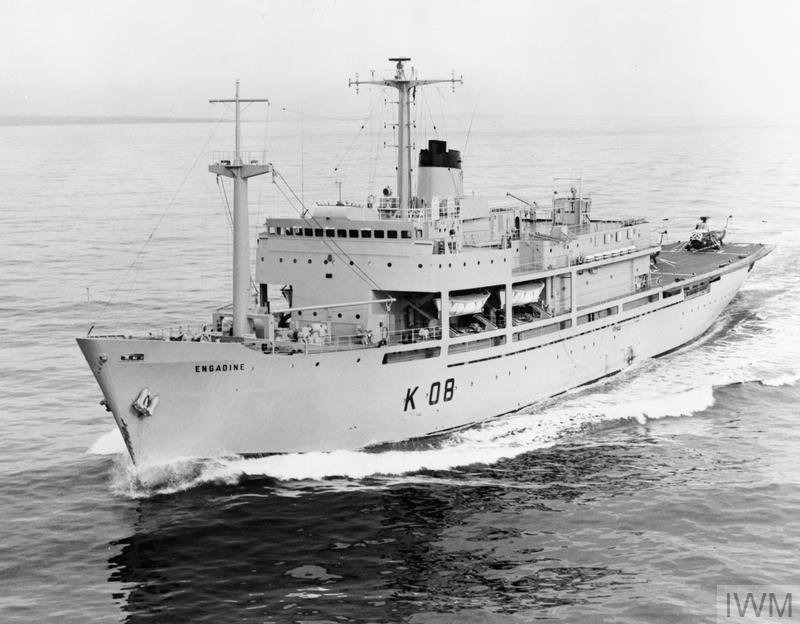In the early hours of Saturday 15 May 1982 the SAS dealt a severe blow to the hopes of Argentine commanders that they could retain control of the Falkland Islands which they had wrested from the UK on 2 April.
A group of fewer than 50 special forces troops had been landed on the north of Pebble Island in the teeth of a gale late on the evening of 14 May and ghosted just under four miles to a rudimentary airstrip which presented a significant threat to the imminent British landings at San Carlos Water.
Not only were the aircraft capable of causing havoc amongst troops landing through ground attacks, but the airfield also hosted a number of aircraft used for reconnaissance, which would almost certainly have spotted the build-up to the proposed landings in the narrow Falkland Sound an even narrower San Carlos Water, a bay off the main sound that separates East and West Falkland.
Explosive charges were laid on a number of aircraft, with the remainder being blasted by rifle fire and anti-tank rockets.
The explosions and rocket strikes was the signal for destroyer HMS Glamorgan, just offshore, to join the fray with naval gunfire support, hitting fuels stores, buildings and defensive positions with high-explosive shells.
With just one man injured, by shrapnel from a charge placed by Argentine troops to render the airfield unusable to the British in the event of a full-scale landing, the SAS team withdrew and were picked up by Sea King as planned.
Before dawn the Special Forces team was back on board flagship HMS Hermes, further out to sea, and the carrier steamed eastwards, with gale-force winds on the starboard quarter, to rejoin the Carrier Battle Group, accompanied by Glamorgan and Type 22 frigate HMS Broadsword, which provided anti-air cover for the three-ship flotilla.
The raid on Pebble Island had been put together late in the day, with little time for reconnaissance or rehearsal, but was highly successful – six Argentine-built Pucara ground attack aircraft, four Turbo-Mentor light attack aircraft and one Short Skyvan transport aircraft were destroyed or put out of action, along with most of the fuel and ammunition on the site and a small radar installation.
With the weather improving though the day, the British task group set about or started a number of activities in preparation for the forthcoming landings at San Carlos Water.
Destroyer HMS Glamorgan was sent off to carry out a series of overnight bombardments of East Falkland, close to Stanley, in the hope of deceiving the Argentines as to where the landings would be.
Frigates HMS Brilliant and HMS Alacrity were tasked with sweeping through Falkland Sound once more to check for mines and remove any Argentine shipping in the area.
Supply ship RFA Fort Austin was detached from the Carrier Battle Group to rendezvous with a group of Special Forces who were aiming to parachute into the Atlantic from an RAF C-130 Hercules, ready for a daring raid on an Argentine air base.
Nuclear attack submarine HMS Valiant was expected in the area over the weekend, and the bulk of the Amphibious Group, which comprised more than 20 ships, was still making its way south, some directly towards the Falklands, others to South Georgia to allow for the right people to be in the right ships for the landings.
Aviation support ship RFA Engadine arrived in Gibraltar to refuel, setting off again on 16 May.
A long-distance reconnaissance flight by an RAF Nimrod of 201 Sqn, which covered 8,300 miles in 19 hours, swept the Argentine coast looking for warship movements that might threaten British task group – nothing was spotted.
Elsewhere the normal drumbeat of replenishments at sea and training continued as minds were focused on the imminent landings – though final approval had yet to be given by Mrs Thatcher’s Cabinet.
Today’s image from the Imperial War Museum collection (© IWM MH 27596) shows aviation support ship RFA Engadine.
* These posts can only give a brief sense of what was a complex and fast-moving situation 40 years ago, and cannot cover the involvement of every ship, squadron and unit in detail – for a much more comprehensive account see the Falklands section of naval-history.net at https://www.naval-history.net/NAVAL1982FALKLANDS.htm
The Royal Naval Association is the biggest collective group of Royal Naval veterans and serving personnel, with more than 270 branches in the UK and overseas.
The RNA provides those with a link to the Royal Navy access to a life-long community of like-minded and supportive individuals.
Our community provides companionship, resilience, comradeship and unity to anyone and everyone with a Naval story, supporting them through life's highs and lows.
Membership is now free (please note, some branches may charge a small annual subscription, payable locally on their request) – see https://royal-naval-association.co.uk/join-us/ for details of how to join.
